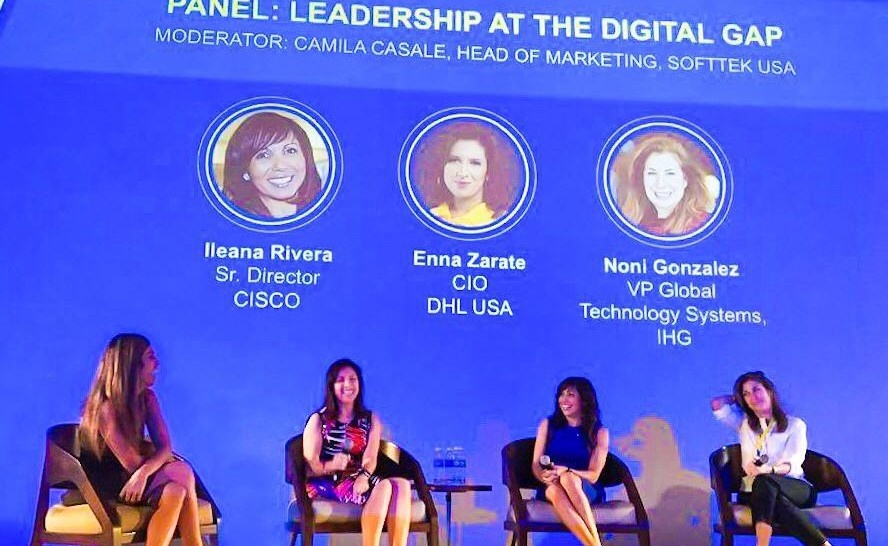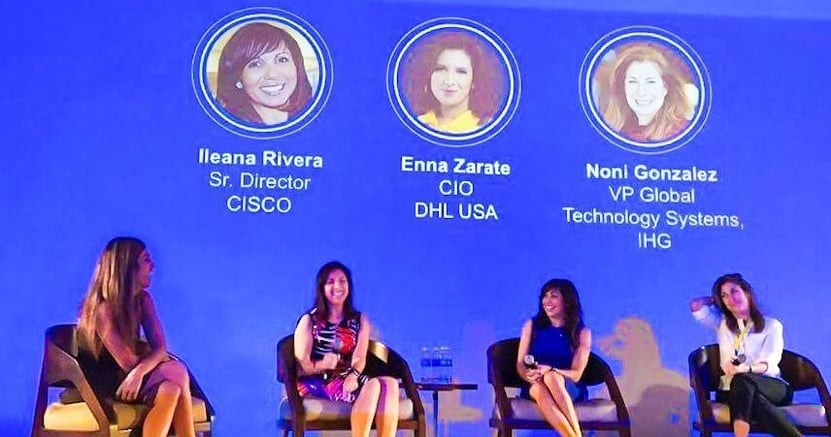Be the Change and Look in the Garage – Leadership in the Digital Age


At the recent Softtek Digital Innovation Summit I had the privilege of moderating a panel discussion of industry leaders who are at the forefront of driving digital change within their organizations and market sectors. The three women comprising the panel shared their experiences and insights on inspiring transformational change within their teams and their businesses, and offered their perspective on leadership in the digital era.
Change – specifically, the challenges, pain points and resistance that often accompany change initiatives – was a central theme of the discussion. Ileana Rivera, Senior IT Director at Cisco Systems, shared an adage that informs her organization’s leadership philosophy: “In the words of our CIO, ‘change can happen by us, with us or to us.’ We want it to be ‘by us,’ we want to be the change and instill that culture.” And while she favors the “carrot and not the stick” approach, in fostering change, ultimately, Ileana says, the question comes down to, “Are you in or are you out?”
Noni Gonzalez, Vice President of Global Technology Systems at Intercontinental Hotel Group, agreed that embracing change is an essential leadership trait, and said that “letting go” of established practices and old ways of doing things is essential to facilitate change. Noni also noted that a “show rather than tell” approach is key to driving change. “Telling people they need to move faster won’t work, because there’s no way to know what that means.”
So how does a leader translate a culture of change into business results? Enna Zarate, VP CIO at DHL Express USA, says that transformation shouldn’t be viewed as a one-and-done exercise but rather as an ongoing process where incremental improvements yield ongoing savings and business benefits, which in turn build momentum for further change. In shipping, the agility of transformation means greater visibility into tracking packages, and giving customers the ability to change the day of a shipment or the place a package is received.
For Noni in the hospitality industry, the “reality check” of digital transformation lies in ensuring that data, systems and inventory in the back office are seamlessly integrated with the customer at the front end. It’s this integration that enables what we think of as the typical positive guest experience – being welcomed at the door, picking up your key without checking in, getting a preferred room location and temperature setting, and arriving at your room with your favorite chilled beverage waiting.
We also discussed the underlying rationale for change and why digital transformation is so essential. Ultimately, of course, it’s about survival – survival in a competitive environment that is continually redefining itself. Today, identifying and responding to new disrupters and competitive pressures coming from unanticipated sources is imperative. Noni and Enna both advised leaders to “look in the garage” to find the innovators who are developing the disruptive business models and technologies that will be keeping us awake in the very near future.
Nurturing talent is a key leadership attribute, and we discussed what it takes to work effectively with Millennials. Ileana argued that “Millennials” is a mindset more than anything, and that a leader should aim to be flexible and adaptable to manage different types of people, rather than cater to a specific type. Enna offered a similarly nuanced perspective, stating that leadership requires forging connections between different people. For Millennials, she stressed the importance of acknowledging their desire for recognition while at the same time continually presenting new challenges and demanding accountability. In terms of driving transformation, she added, the adaptability of Millennials is a critical asset: “People always struggle with change management. I’ve learned that, if you want change, put a Millennial in charge.”
We also discussed the issue of women – and specifically, the shortage of women – in leadership roles. While the consensus was that significant progress has been made, we also agreed that more needs to be done. Enna remarked that equality isn’t about a number, but rather about recognizing the value of diversity and the ability to bring new perspectives and see problems in a new light. As women leaders, we acknowledged our shared responsibility as role models to nurture talent – whether through individual commitment or participation in national forums or local grassroots council. It’s not about what we say, it’s about what we do.
In assessing their leadership journeys, the panelists concurred on the value of mistakes and learning from them, and on the importance of encouraging risk-taking, as well as accepting the occasional failure that such encouragement inevitably entails. And if she had to do it all over again, Ileana said she would be more aggressive in pushing for change earlier in her career. While conventional wisdom has it that you need to know the destination before engaging the right people, she believes it’s the other way around: “First, you get the right people on the bus. Then you decide where you’re going.”
To sum up, I’d say the discussion boiled down to two key leadership attributes: customer focus and passion for the job. As Noni put it: “If creating hotels that guests love is not paramount to your day to day, then what’s the point?”
Camila Casale, Sr. Vice President Marketing & Strategy of Softtek USA & Canada, is Founder and President of the Miami Women in Technology Council, a group dedicated to empowering women from different nationalities and backgrounds to succeed in the tech industry. Contact Camila for more information on this group.
.jpg?width=352&name=Digital%20Innovation%20Summit%202017%20(2).jpg)
